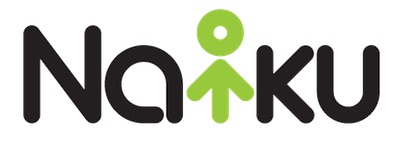
Welcome back to this week’s edition of Naiku’s Coach’s Corner.
This week, I want to discuss the importance of incorporating formative assessments into your classroom assessment practice. Formative assessment is a great way to measure a student’s performance during instruction, and usually occurs regularly throughout the instruction process. When we assess student learning for formative purposes, there may be no final mark on a student’s paper or summative grade in our grade book. Rather, formative assessment can serve as practice for our students, much like a meaningful homework assignment does. And the key to effective formative assessment is the descriptive feedback that we as teacher provide to our students. Below, I discuss 3 ways in which formative assessments can be used to ensure the success of all students.
1. Formative assessments allow us to adapt instruction based on results, making modifications and improvements that will produce immediate benefits for our students’ learning. Much like pre-assessments, formative assessments can be done in two different ways within Naiku. First, you can simply conduct a Quick Question session to poll your students. This will give you a quick and informal way to check for understanding during your lesson. Quick Question is especially helpful when you do not have an assessment pre-made, but you still want to have an measure of how students are retaining information. Second, you can prepare a longer formative assessment for your students. In both cases, Naiku provides instant results with some great data points. These results can be used to find where the shortcomings are within your instruction, or among your students.
2. Formative assessments give our students evidence of their current progress to actively manage and adjust their own learning. This also provides our students the ability to track their educational goals. With the instant results that Naiku provides, students have the ability to assess their learning at a metacognitive level. In short terms, metacognition is the ability for a student to think about thinking. This can be taken even further because students have the ability to reflect on each assessment. Naiku also allows students to set goals and journal about their educational experiences with our ‘Journal’ feature. These journals are shared with the teacher, which allows teachers to really get a glimpse inside each of their student’s educational journey.
3. Formative assessments give us the ability to provide constant feedback to our students. This allows our students to be part of the learning environment and to develop self-assessment strategies that will help with the understanding of their own thought process. With Naiku’s ‘Feedback’ feature, teachers and students can leave one another feedback on a given assessment. This can act as a sort of conversation pertaining specifically to that student’s learning.
Formative assessments can be done in two different ways. They can be done formally. Formal assessments often times, but not always, are used as a grade in a students academic record. Formal formative assessments can include quizzes, work samples, daily work, exit slips, and journals.
Formative assessment can also be done in an informal manner. Informal assessments are often times not used for grading purposes. Rather they are used to get a quick reference of how your students are understanding a specific topic or lesson. Informal formative assessments can include white board demonstrations, thumbs up/thumbs down, directed questions, and discussion reflections.
I have created a sample formative assessment covering “The Water Cycle” for grade 8 science. If you are already logged into your Naiku account you can find this pre-assessment here. You can also search for this assessment by clicking “Search” from your assessments page. In the “Assessment Name” box, enter Water Cycle Quiz” and click search. I have this formative assessment set up as a quiz, but it could be used in various applications. These questions could be broken up and used as homework assignments, entrance/exit slips, etc. Remember, formative assessments can be used in the grade book but do not have to be. As you start using formative assessments more often, you will gain a better idea of when it is appropriate to assign grades for a given assessment.
I hope you found the information useful and find ways to incorporate formative assessments into your classroom. Next time, I’ll discuss the importance of summative assessments and suggest ways to incorporate this critical assessment technique with Naiku. If you have suggestions for future topics that you would like to see me discuss, please send me a note at sethw@naiku.net.

